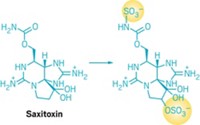Advertisement
Grab your lab coat. Let's get started
Welcome!
Welcome!
Create an account below to get 6 C&EN articles per month, receive newsletters and more - all free.
It seems this is your first time logging in online. Please enter the following information to continue.
As an ACS member you automatically get access to this site. All we need is few more details to create your reading experience.
Not you? Sign in with a different account.
Not you? Sign in with a different account.
ERROR 1
ERROR 1
ERROR 2
ERROR 2
ERROR 2
ERROR 2
ERROR 2
Password and Confirm password must match.
If you have an ACS member number, please enter it here so we can link this account to your membership. (optional)
ERROR 2
ACS values your privacy. By submitting your information, you are gaining access to C&EN and subscribing to our weekly newsletter. We use the information you provide to make your reading experience better, and we will never sell your data to third party members.
Pharmaceuticals
Toxicity Risk Reduced For Isothiazole Drug
Scientists take advantage of toxicity data to modify an anticancer drug to avoid the toxicity without altering efficacy
by Sophie L. Rovner
September 27, 2010
| A version of this story appeared in
Volume 88, Issue 39
Researchers at biopharmaceutical firm Amgen have discovered a potential toxicity mechanism of a promising isothiazole-containing anticancer drug, and they have used the information to modify the drug to avoid the toxicity without altering its medicinal properties (Chem. Res. Toxicol., DOI: 10.1021/tx100208k). This development serves as a “structural alert for medicinal chemists who might consider using a methyl isothiazole group to increase potency or improve pharmacokinetics,” Yohannes Teffera and coworkers note. The drug is a potent, selective inhibitor of c-Met, a receptor tyrosine kinase enzyme that gets out of control in cancer. The methyl isothiazole group is normally safe, but in preclinical studies the team found that the drug forms a conjugate with the antioxidant tripeptide glutathione, indicating that the drug is bioactivated in the liver—the first step toward drug toxicity. The researchers uncovered a previously unknown bioactivation mechanism for isothiazoles in which the sulfur atom is oxidized via a P450 enzyme, thereby leaving a ring carbon susceptible to nucleophilic attack by glutathione. They subsequently prepared isoxazole and pyrazole analogs of the drug, which have oxygen and nitrogen, respectively, in place of sulfur. These analogs aren’t susceptible to bioactivation and avoid toxicity without affecting the drug’s efficacy.





Join the conversation
Contact the reporter
Submit a Letter to the Editor for publication
Engage with us on Twitter